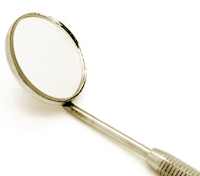|

Day in the Life
 Dental assistants
perform many tasks, ranging from patient care and taking x rays to
recordkeeping and scheduling appointments. Their duties vary by state and
by the dentistsí offices where they work. Dental assistants
perform many tasks, ranging from patient care and taking x rays to
recordkeeping and scheduling appointments. Their duties vary by state and
by the dentistsí offices where they work.
Dental assistants
work in a well-lighted, clean environment. Their work area usually is near
the dental chair so that they can arrange instruments, materials, and
medication and hand them to the dentist when needed. Dental assistants must
wear gloves, masks, eyewear, and protective clothing to protect themselves
and their patients from infectious diseases. Assistants also follow safety
procedures to minimize the risks associated with the use of x-ray machines.
About half of dental assistants have a 35- to 40-hour
workweek. Most of the rest work part-time or have variable schedules.
Depending on the hours of the dental office where they work, assistants may
have to work on Saturdays or evenings. Some dental assistants hold multiple
jobs by working at dental offices that are open on different days or
scheduling their work at a second office around the hours they work at
their primary office.
Dental assistants must be a second pair of hands for a
dentist; therefore, dentists look for people who are reliable, work well
with others, and have good manual dexterity.
Without advanced education, advancement opportunities are
limited. Some dental assistants become office managers, dental-assisting
instructors, dental product sales representatives, or insurance claims
processors for dental insurance companies. Others go back to school to
become dental hygienists.
For many, this entry-level occupation provides basic training and
experience and serves as a steppingstone to more highly skilled and higher
paying jobs.
Note: Some resources in this section are provided by the US
Department of Labor, Bureau of Labor
Statistics.
|